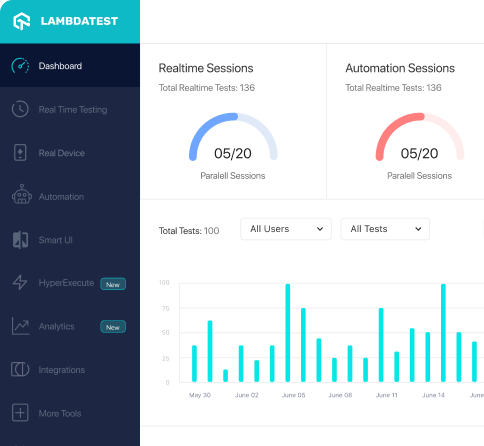How to use LongAdderAssert_isZero_Test class of org.assertj.core.api.atomic.longadder package
Best Assertj code snippet using org.assertj.core.api.atomic.longadder.LongAdderAssert_isZero_Test
Source:LongAdderAssert_isZero_Test.java
...18 * Tests for <code>{@link LongAdderAssert#isZero()} </code>.19 *20 * @author Grzegorz Piwowarek21 */22class LongAdderAssert_isZero_Test extends LongAdderAssertBaseTest {23 @Override24 protected LongAdderAssert invoke_api_method() {25 return assertions.isZero();26 }27 @Override28 protected void verify_internal_effects() {29 verify(longs).assertIsZero(getInfo(assertions), getActual(assertions).longValue());30 }31}...LongAdderAssert_isZero_Test
Using AI Code Generation
1package org.assertj.core.api.atomic.longadder;2import static org.assertj.core.api.Assertions.assertThat;3import java.util.concurrent.atomic.LongAdder;4import org.junit.jupiter.api.Test;5class LongAdderAssert_isZero_Test {6 void should_pass_if_actual_is_zero() {7 LongAdder actual = new LongAdder();8 assertThat(actual).isZero();9 }10 void should_fail_if_actual_is_not_zero() {11 LongAdder actual = new LongAdder();12 actual.increment();13 assertThat(actual).isZero();14 }15}16package org.assertj.core.api.atomic.longadder;17import static org.assertj.core.api.Assertions.assertThat;18import java.util.concurrent.atomic.LongAdder;19import org.junit.jupiter.api.Test;20class LongAdderAssert_isZero_Test {21 void should_pass_if_actual_is_zero() {22 LongAdder actual = new LongAdder();23 assertThat(actual).isZero();24 }25 void should_fail_if_actual_is_not_zero() {26 LongAdder actual = new LongAdder();27 actual.increment();28 assertThat(actual).isZero();29 }30}31package org.assertj.core.api.atomic.longadder;32import static org.assertj.core.api.Assertions.assertThat;33import java.util.concurrent.atomic.LongAdder;34import org.junit.jupiter.api.Test;35class LongAdderAssert_isZero_Test {36 void should_pass_if_actual_is_zero() {37 LongAdder actual = new LongAdder();38 assertThat(actual).isZero();39 }40 void should_fail_if_actual_is_not_zero() {41 LongAdder actual = new LongAdder();42 actual.increment();43 assertThat(actual).isZero();44 }45}46package org.assertj.core.api.atomic.longadder;47import static org.assertj.core.api.Assertions.assertThat;48import java.util.concurrent.atomic.LongAdder;49import org.junit.jupiter.api.Test;50class LongAdderAssert_isZero_Test {51 void should_pass_if_actual_is_zero() {52 LongAdder actual = new LongAdder();LongAdderAssert_isZero_Test
Using AI Code Generation
1package org.assertj.core.api.atomic.longadder;2import static org.assertj.core.api.Assertions.assertThat;3import java.util.concurrent.atomic.LongAdder;4import org.junit.jupiter.api.DisplayName;5import org.junit.jupiter.api.Test;6class LongAdderAssert_isZero_Test {7 @DisplayName("should pass when LongAdder is zero")8 void should_pass_when_LongAdder_is_zero() {9 LongAdder actual = new LongAdder();10 assertThat(actual).isZero();11 }12 @DisplayName("should fail when LongAdder is not zero")13 void should_fail_when_LongAdder_is_not_zero() {14 LongAdder actual = new LongAdder();15 actual.increment();16 assertThat(actual).isZero();17 }18}19package org.assertj.core.api.atomic.longadder;20import static org.assertj.core.api.Assertions.assertThatExceptionOfType;21import java.util.concurrent.atomic.LongAdder;22import org.assertj.core.api.ThrowableAssert.ThrowingCallable;23import org.assertj.core.api.exception.AssertionErrorFactory;24import org.junit.jupiter.api.DisplayName;25import org.junit.jupiter.api.Test;26class LongAdderAssert_isZero_Test {27 @DisplayName("should pass when LongAdder is zero")28 void should_pass_when_LongAdder_is_zero() {29 LongAdder actual = new LongAdder();30 assertThat(actual).isZero();31 }32 @DisplayName("should fail when LongAdder is not zero")33 void should_fail_when_LongAdder_is_not_zero() {34 LongAdder actual = new LongAdder();35 actual.increment();36 ThrowingCallable code = () -> assertThat(actual).isZero();37 assertThatExceptionOfType(AssertionError.class).isThrownBy(code)38 .withMessage(AssertionErrorFactory.shouldBeZero(actual).create());39 }40}LongAdderAssert_isZero_Test
Using AI Code Generation
1package org.assertj.core.api.atomic.longadder;2import static org.assertj.core.api.Assertions.assertThat;3import java.util.concurrent.atomic.LongAdder;4import org.junit.jupiter.api.Test;5class LongAdderAssert_isZero_Test {6 void should_pass_if_value_is_zero() {7 LongAdder actual = new LongAdder();8 assertThat(actual).isZero();9 }10 void should_fail_if_value_is_not_zero() {11 LongAdder actual = new LongAdder();12 actual.increment();13 assertThat(actual).isZero();14 }15}16package org.assertj.core.api.atomic.longadder;17import static org.assertj.core.api.Assertions.assertThat;18import java.util.concurrent.atomic.LongAdder;19import org.junit.jupiter.api.Test;20class LongAdderAssert_isZero_Test {21 void should_pass_if_value_is_zero() {22 LongAdder actual = new LongAdder();23 assertThat(actual).isZero();24 }25 void should_fail_if_value_is_not_zero() {26 LongAdder actual = new LongAdder();27 actual.increment();28 assertThat(actual).isZero();29 }30}LongAdderAssert_isZero_Test
Using AI Code Generation
1import static org.assertj.core.api.Assertions.assertThat;2import static org.assertj.core.api.Assertions.assertThatExceptionOfType;3import java.util.concurrent.atomic.LongAdder;4import org.junit.jupiter.api.Test;5class LongAdderAssert_isZero_Test {6 private final LongAdder actual = new LongAdder();7 void should_pass_if_actual_is_zero() {8 assertThat(actual).isZero();9 }10 void should_fail_if_actual_is_not_zero() {11 actual.increment();12 assertThatExceptionOfType(AssertionError.class).isThrownBy(() -> assertThat(actual).isZero())13 .withMessage("%nExpecting:%n <1>%nto be equal to:%n <0>%nbut was not.");14 }15}16import org.junit.jupiter.api.Test;17import static org.assertj.core.api.Assertions.assertThat;18import static org.assertj.core.api.Assertions.assertThatExceptionOfType;19import java.util.concurrent.atomic.LongAdder;20class LongAdderAssert_isZero_Test {21 private final LongAdder actual = new LongAdder();22 void should_pass_if_actual_is_zero() {23 assertThat(actual).isZero();24 }25 void should_fail_if_actual_is_not_zero() {26 actual.increment();27 assertThatExceptionOfType(AssertionError.class).isThrownBy(() -> assertThat(actual).isZero())28 .withMessage("%nExpecting:%n <1>%nto be equal to:%n <0>%nbut was not.");29 }30}31import org.junit.jupiter.api.Test;32import static org.assertj.core.api.Assertions.assertThat;33import static org.assertj.core.api.Assertions.assertThatExceptionOfType;34import java.util.concurrent.atomic.LongAdder;35class LongAdderAssert_isZero_Test {36 private final LongAdder actual = new LongAdder();37 void should_pass_if_actual_is_zero() {38 assertThat(actual).isZero();39 }40 void should_fail_if_actual_is_not_zero() {41 actual.increment();42 assertThatExceptionOfType(AssertionError.class).isThrownBy(() -> assertThat(actual).isZero())43 .withMessage("%nExpecting:%n <1>%nto be equal to:%n <0>%nbut was not.");44 }45}46import org.junit.jupiter.api.Test;47import java.util.concurrent.atomic.LongAdder;48import static org.assertj.core.api.Assertions.assertThat;49import static org.assertj.core.api.Assertions.assertThatExceptionOfType;Automation Testing Tutorials
Learn to execute automation testing from scratch with LambdaTest Learning Hub. Right from setting up the prerequisites to run your first automation test, to following best practices and diving deeper into advanced test scenarios. LambdaTest Learning Hubs compile a list of step-by-step guides to help you be proficient with different test automation frameworks i.e. Selenium, Cypress, TestNG etc.
LambdaTest Learning Hubs:
- JUnit Tutorial
- TestNG Tutorial
- Webdriver Tutorial
- WebDriverIO Tutorial
- Protractor Tutorial
- Selenium 4 Tutorial
- Jenkins Tutorial
- NUnit Tutorial
- Jest Tutorial
- Playwright Tutorial
- Cypress Tutorial
- PyTest Tutorial
YouTube
You could also refer to video tutorials over LambdaTest YouTube channel to get step by step demonstration from industry experts.
Most used methods in LongAdderAssert_isZero_Test
Try LambdaTest Now !!
Get 100 minutes of automation test minutes FREE!!



